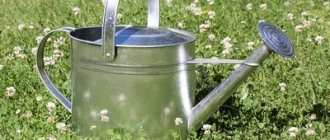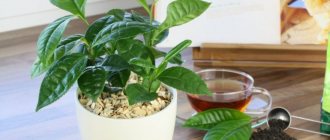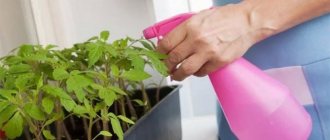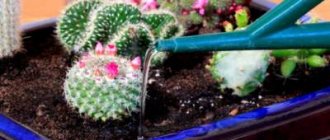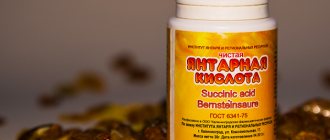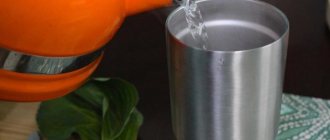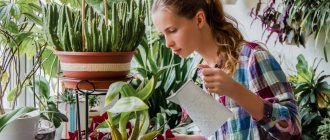Yeast is widely used in various sectors of the food industry and the production of medicines. In addition, I often use them in the most unexpected areas. For example, many gardeners water flowers with yeast, using it as fertilizer for various varieties. This is due to the positive effect of the product on crops, which ensures their growth and even lush flowering.
What happens if you water indoor flowers with yeast solution?
It turns out that supplements made from yeast are useful for green “pets”:
- They promote their development and improve the composition of the soil, since yeast is a “beneficial” bacteria.
- They have a great effect on the growth of the root system of plants, because the development of the upper part of the flowers depends on their growth.
- Thanks to yeast, plants become healthier and better tolerate any diseases.
- For plants grown in seedlings, it is simply necessary to use a yeast solution, because due to it they tolerate transplanting better.
- As practice shows, such fertilizer has a beneficial effect not only on all types of indoor and garden crops.
For which plants can yeast be used?
Absolutely any crops can be watered with yeast; it can have a positive effect on any varieties and types of plants. The best response to the remedy can be obtained from petunia and pelargonium.
You can use a yeast solution with sugar for flower crops that are in a growth crisis: there is no flowering, the plant is developing slowly, and the first signs of wilting are present.
But this effect can only be achieved if fresh “live” yeast is used. As for the type of product, absolutely any will do, the most important thing is that you cannot use expired yeast.
How to make fertilizer from different types of yeast
It only takes a few minutes to make yeast nutrition, because it is very simple to prepare. At the same time, it is necessary to note several ways to prepare a “healthy potion”. The main thing is what form the yeast is produced in (instant or “raw”).
Yeast is a very inexpensive product that is sold in almost all grocery stores, so such fertilizer will not require large financial costs.
A completely inexperienced florist can handle making an infusion from yeast. That is why this supplement has gained immense popularity in modern society.
Instant concentrated
To prepare the solution, you need to take a bucket of warm water and dilute 1 tablespoon of yeast in it. Useful fertilizer is ready! To enhance the effect, add 50 grams of granulated sugar to the solution. Experienced gardeners also recommend adding hops to the solution, since it enhances the fermentation effect.
However, adding sugar and hops is not necessary. However, in this case, the infusion requires a short exposure - 2 hours.
To water indoor plants, the prepared solution must be further diluted, since it is too concentrated and can cause burns to the tender roots of young seedlings.
The concentrated solution must be diluted in proportions of 1:5. One part fertilizer and five parts warm, settled water.
Some gardeners prepare the solution according to a different recipe: 1 teaspoon of sand, 1 tablet of ascorbic acid and 1 packet of dry yeast. All ingredients are mixed and dissolved in 10 liters of warm water. Place in a warm place for a couple of hours to steep. The feeding is ready!
Raw
If you only have raw yeast in the house, don’t worry and rush headlong to the store for dry concentrate. After all, they will make a delicious treat for indoor flowers. It is worth noting that preparing a useful solution is very easy.
0.1 kg of raw yeast is diluted in 10 liters of warm, settled water, and then left for 24 hours. Experienced gardeners say that this solution is most useful for perennial plants.
Methods of application
Research on the use of yeast fungus as an organic fertilizer has shown that the method can bring benefits and harm. The beneficial effect is achieved with the correct dosage. Excessive use can be harmful. In this case, the soil turns to stone and disrupts the air exchange process.
Not only root feeding, but also leaf feeding is considered useful. It is used to fertilize young and weak plants. The solution is diluted according to the standard scheme. Spray once a season to strengthen the seedlings.
How to use fertilizer correctly
All fertilizers are good, but it is worth remembering a sense of proportion. After all, for any plants, an excess of fertilizing is just as harmful as a lack of it. That is why, when making fertilizer from yeast, it is worth remembering its concentration and the feeding rates for each plant individually.
An excess of ozone in the soil can lead to intensive development of green mass, but the complete disappearance of buds.
It is important to remember that the need to replenish nitrogen reserves arises only in the spring, since during this period of time the green part of the plant begins to develop intensively. As soon as the plants begin to bloom, fertilizing should be stopped immediately.
Fertilizer for indoor plants prepared with yeast is very useful. Because it is a natural bio-product that contains no chemicals. The effectiveness of the solution lies in the effect of fungi contained in yeast on the most secluded corners of plants, where other fertilizers are unable to reach. This is why plants begin to grow better and bloom more actively. The results of using yeast nutrition can be seen after a week.
The solution is excellent for rooting cuttings. First, they are soaked in fertilizer for 24 hours and then rooted in clean water. Based on observations, we can safely say that after soaking, cuttings take root much faster and produce several times more roots.
Video: Yeast for indoor plants
Yeast solution is used to feed vegetable seedlings, indoor flowers, and garden strawberries during transplantation. There are several basic rules for applying fungal fertilizer:
- yeast fungi reproduce better in water, the temperature of which is about 500C, so fertilizers must be applied to warm soil;
- You can only use freshly prepared solution;
- Frequent application of fertilizer is contraindicated;
- It is best to alternate the application of yeast fertilizers with ash fertilizers, since ash can replenish the necessary microelements that are washed out during fermentation.
Fertilizer rules
In order for flowers on windowsills to grow faster and feel good, it is important not only to follow the fertilizer recipe, but also to apply the prepared mixtures correctly.
Necessary:
- choose the right time to apply fertilizers;
- observe the measure;
- use additional means of soil enrichment.
Important! To prepare the top dressing, use only fresh yeast and bread without signs of mold. Yeasts are usually very tenacious, but when they interact with other, more aggressive bacteria, they die. Fertilizer made from stale raw materials contaminated with microorganisms will be completely useless.
Having the necessary information, it is not difficult to correctly organize the process of feeding with a fermented solution. Find out how to do this in practice to achieve maximum effect.
What flowers is it suitable for?
Yeast feeding is suitable for almost all indoor plants, flowering and decorative deciduous, needing and not needing a period of rest, light-loving and shade-tolerant.
Some species respond especially favorably to such care:
- pelargoniums;
- begonias;
- cordan roses;
- violets;
- stromanta;
- syngonium;
- Schlumberger;
- peperomia;
- Crassula;
- ficus
How to water correctly?
To get beautiful, strong plants, you should adhere to the following principles:
- use only freshly prepared solution for watering;
- apply fertilizer to wet soil, after loosening the top layer;
- water the plant from above, and not from the pan;
- alternate yeast feeding with the addition of a small amount of ash, which will saturate the soil with potassium and calcium - those substances that disappear due to fermentation;
- acidic soil or soil with a large amount of alkali is destructive to yeast fungus, it is useless to use for plants growing in such soil;
- Fertilizer cannot be used simultaneously with fungicides, because they will destroy the fungus, preventing it from doing its “work.”
How many times can you feed?
For the successful development of the plant, it is enough to feed it several times a season:
- In spring, when the flower wakes up. Different types have their own deadlines. Some enter the active growth phase at the end of February - beginning of March. Others wait for a more significant increase in daylight hours, coming to life only by mid-April.
- 5-7 days after transplanting into a new pot. This way the flower will quickly get used to the changed conditions and will not get sick.
- During active flowering. This requires a lot of energy, which can be replenished with yeast fertilizer.
- At the beginning of autumn. Many indoor flowers at this time stock up on strength before winter “hibernation”. The autumn portion should be less abundant than the previous ones.
- As needed. The plant itself will signal that it lacks nutrients. Its growth will slow down, new inflorescences will be smaller than those that appeared earlier, the leaves will begin to wither and fall off.
- It should be remembered that an excess of nutrients is harmful. Having received too much nitrogen, a flower may begin to rapidly increase its green mass, but will no longer be able to bloom.
Advice from professionals
Agronomists advise using yeast fertilizer only on warm soil. Otherwise, the fungi will simply stop fermenting, which means that the desired effect will never occur. Therefore, the warmest spring month of May is considered the best time to fertilize garden crops.
To feed flower crops, the solution should not be used too often. It is best to use it during the period of crop transplantation, as well as in the summer. If there are weak plants in the garden or flower bed, then watering them with a yeast solution will be a life-saving procedure for them. However, it is worth remembering that overfeeding the plant has a detrimental effect on it.
After adding the yeast solution, the soil must be fertilized with ash, as it will restore the soil balance of calcium and potassium.
Can the above recommendations be applied in the garden?
By the way, keep in mind that all the same recommendations can be applied perfectly to other house plants, such as berries and vegetables. The only thing is, do not fertilize potatoes and beets with yeast, this will change their taste characteristics not for the better. But peppers and strawberries, tomatoes, cucumbers, eggplants will be very grateful to you and will give you a good harvest. Vegetable crops can be watered with yeast solution from the moment the seedlings are planted in open ground, with repeated fertilizing throughout the season, approximately once a month, once. In addition to sugar, you can add diluted chicken manure and an infusion of nettles or dandelions to the yeast. Any organic matter will come in handy at this time. After watering the beds, sprinkle wood ash on the surface of the soil.
When using the above tips in vegetable growing, the rooting of seedlings often reaches 100%, the plants quickly develop a root system and through it fully receive the necessary nutrition from the soil. House flowers, not experiencing a lack of mineral elements, begin to actively bloom, the stem becomes thicker, branches more densely, and the green mass grows. We advise you not to neglect the recommendations of experienced plant growers and put into practice the recipes they have tested.
How to feed cabbage with yeast
Cabbage in open ground is fed in the following order: first, a month after planting the seedlings, the first feeding is carried out, and after 20 days - another one.
Use the following composition: take 12 g of dry yeast, pour it into a 3-liter jar, add 100 g of granulated sugar and fill with warm water. The mixture should sit for 7-8 days. Upon completion of fermentation, dissolve every 250 ml of the resulting infusion in 10 liters of water and pour over the cabbage.
Before adding yeast fertilizing, the cabbage should be watered with clean water.
What can be fertilized with yeast?
They are effective for almost all crops: both those growing in the room (geranium), and garden flowers (petunia), bushes, trees, vegetables. Yeast feeding for peppers, tomatoes, and cucumbers turns out to be useful. Used as fertilizer when growing strawberries and wild strawberries.
How to feed tomatoes with yeast
Tomato, like no other crop, “loves” feeding with fresh yeast. However, not all gardeners know how to properly feed small bushes of young tomatoes in open ground with yeast:
- Feed the tomatoes with yeast for the first time To do this, dilute 100 g of dry yeast in 10 liters of water at a temperature of 25-30°C. Add 2 tbsp to them. sugar to activate yeast growth. After 2 hours, the starter will be ready and needs to be diluted with 50 liters of water. Apply at least 0.5 liters of the composition per bush;
- Fertilize the second time Increase the dosage to 1 l;
- Apply the same fertilizer a third time Increase the consumption rate to 2 liters per bush.
Not everyone also knows how to feed tomatoes with yeast in a greenhouse. It is necessary to carry out two feedings: the first - after rooting of seedlings, and the second - before flowering begins.
The recipe for preparing the mixture in both cases is identical: dilute 10 g of dry yeast in 10 liters of water, add 0.5 liters of wood ash, 0.5 liters of chicken manure extract (infused for 3 days in a ratio of 1:10 with water) and 5 tbsp. . Sahara. After a few hours, dilute the already obtained infusion with water in a ratio of 1:10 and pour it over the bushes around the circumference at the rate of 0.5-2 liters per plant. It is best to water from a watering can with a strainer at some distance from the shoots so as not to damage the root system.
The most convenient way to fertilize tomatoes is with a watering can - this way you can protect the root system from damage
Yeast for rooting cuttings
The yeast solution for rooting cuttings is prepared according to the standard recipe (10 g of dry yeast per 1 liter of water). The cuttings are soaked in it for a day, then they are taken out, washed and placed in a container with clean water. After some time, roots appear at the site of the thickening at the base. This way you can root cuttings of roses, ornamental and berry bushes.
So, you have learned how to feed plants with yeast. This simple but very effective remedy stimulates their growth, slows down the development of diseases and develops the root system. Try to “treat” your plantings with a yeast “delicacy” and you will not regret it.
When is the best time to use yeast supplements?
The most favorable time for this is considered to be spring and summer, i.e. warm time of year when the soil is well warmed up. According to reviews from experienced gardeners, seedlings are most responsive to this “drug” during the picking period. Therefore, it is used for better survival of seedlings when transplanted to a permanent place. When growing seedlings, it is recommended to use yeast “seasoning” twice, no more:
- approximately 10–14 days after picking, when the plants root;
- a week before transplanting to a permanent place: to strengthen the immune system and help the plant overcome stress after planting.
Subsequently, additional fertilizing with yeast solutions is possible, but they will be intended for adult vegetative plants.
| On a note. During their work, yeast takes from the soil almost all the potassium present there and a significant amount of calcium. You can compensate for the loss by fertilizing with potassium or adding ash. It will help to add potassium sulfate and calcium nitrate to the finished fertilizer: 5 g of each per 5 liters of working solution. |
Here are some rules for using fertilizer:
- They only work under warm soil and air conditions. If the requirements are not met, the impact will be useless.
- They are quite unstable when interacting with other more aggressive bacteria.
- Before fertilizing, you should moisten the soil, but do not overwater it.
Photo by G. Kuzmitskaya: Most often, two applications are enough.
Using wild yeast
Berries, fruits, and grains, if not washed, contain living, so-called “wild” cultures of yeast. To do this you need to take:
- Wheat grain of any type of wheat – 200 g.
- Flour – 40 g.
- Sugar – 40 g.
Soak the wheat grain (without washing!) until sprouts appear. Mix with flour and sugar, place in a blender and beat until a creamy mass is formed. Heat in a water bath, without bringing the water to a boil, for about 20 minutes. Place in a warm, dark place for a day. The fermented mixture is diluted with water 1:10 and used for root feeding of plants.
Features of fertilizing with yeast in autumn, summer, spring of different crops
Fertilizing with dry or fresh yeast is useful for many garden inhabitants. But there are crops that are harmed by such fertilizing. These are potatoes, garlic, legumes, onions. The use of yeast has a bad effect on the taste, makes it watery and shortens the shelf life.
- Fertilizing cucumbers with yeast is carried out twice during the entire growing season: the first time it is better to use the recipe with nettle foliage, the second time with ash. You need to use at least a liter per copy. Fertilizing cucumbers with yeast is very necessary for seedlings that need nutrition. This increases its chances of survival even in low light conditions.
- Peppers, root vegetables - beets and carrots - also respond well to yeast feeding with the addition of ash.
- You can also fertilize strawberries with yeast. One bush will require 500 ml of liquid. The first feeding is necessary at the end of April or beginning of May (it all depends on the weather). This will help stimulate the berry to bloom early and grow quickly. Repeat - only when green berries appear (no need to feed during flowering). The third time you can feed after harvesting.
- Feeding tomatoes with yeast is done using milk or whey. Experienced gardeners recommend adding about two dozen more drops of iodine. The consumption is the same - no less than a liter per bush.
- Under berry bushes you need to pour from 1 to 5 buckets of fertilizer (depending on size and age). If there is too much mixture, you can safely use it for foliar feeding, but only in calm and cloudy weather.
Fertilizing indoor plants with yeast is often used. Green pets often suffer from a lack of vitamins and minerals, which is manifested by lethargic leaves and falling buds. The main reason for this condition is the depletion of soil composition, because plants have to exist in limited conditions. Even large and deep pots do not help, so green pets need to be fertilized more often than garden flowers. In this case, it is worth using an effective resuscitating agent - yeast.
The dosage is the same, only you can reduce the amount of ingredients depending on the size of the flowerpots. It is better to fertilize monthly in autumn and winter and once every 10 days in spring and summer. The result becomes noticeable almost immediately. Green pets acquire a rich color, bloom more profusely and feel much better. The plant can get stronger and return to its normal state already on the fourth or fifth day after the first dose of the “medicine”.
Fertilizing flowers with yeast is used primarily to ensure their growth, development and flowering. This is the difference from vegetables, berries and other fruit crops, which require fertilizer for abundant fruiting.
Fertilizing flower seedlings with yeast: reviews
Yeast is a product that is useful not only for housewives and cooks, who use it to add to dough, baked goods, and when making kvass and wine. It also finds use among gardeners who have learned to grow various fertilizers for young plants and soaking seeds. The good thing about fertilizer is that it is a completely organic product, useful microelements are released on the basis of chemical reactions, it does not negatively affect the soil and the environment, and the plants are not saturated with pesticides. Now you know how to inexpensively saturate the soil with organic fertilizer, thanks to which your tomatoes and other plants will grow faster and be incredibly healthy.
How to feed peppers and eggplants with yeast
Recipes for feeding seedlings of peppers and eggplants do not differ from those described above. But fertilizer for open ground vegetables varies somewhat in composition. For them, first of all, you can prepare a “herbal cocktail”. Prepare 1 bucket of herbs (plantain, hops, nettle, etc.), add 0.5 kg of bread or crackers and 0.5 kg of baker's yeast. Pour the ingredients into 50 liters of water and let the contents brew for two days.
A good starter is prepared from 100 g of live yeast, 50-70 g of sugar, 0.5 liters of ash and 0.5 liters of chicken manure extract. Dilute all this with 10 liters of water and apply at least 2 liters of concentrate under each plant.
Sometimes, instead of sugar, you can add raisins and other dried fruits to the starter.
